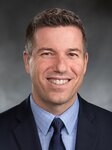

In recent years, the communities in North Central Washington have sadly experienced a significant impact from catastrophic wildfire. Our district has endured many devastating fires, including back-to-back years of the state’s largest wildfires, in 2014 and 2015. In 2020, the state Department of Natural Resources responded to nearly 1,640 fires, including the Cold Springs and Pearl Hill fires in Okanogan and Douglas counties. This past year, wildfires continued to impact our region. Included among them were Wenatchee’s Red Apple Fire and the Cedar Creek and Cub Creek fires in the Methow Valley. Our risk of wildfire has been increasing, which is why proactive measures for forest management and fire response are necessary. These two areas will continue to be important priorities for me as I advocate for our district and adequate wildfire funding.
A stronger, more comprehensive approach
Washington state has been working toward a stronger, more comprehensive approach to reducing our risk of wildfires. That’s why I’m encouraged by the Wildland Fire Protection 10-Year Strategic Plan by Public Lands Commissioner Hilary Franz. I’ve worked closely with Commissioner Franz and DNR staff over recent years and am very proud of the bill we passed together in 2017, Senate Bill 5546, to direct the state DNR to set up a framework for assessing and treating fire-prone lands. The law sets a specific goal of assessing and treating 1 million acres over 16 years, most likely through prescribed fire and strategic thinning. This process is now underway, but it will likely take several years of aggressive thinning and responsible prescribed fire in order to minimize our risk of catastrophic fires. As we’ve learned from the Era of Megafires discussions that originated in Wenatchee, we must take a proactive approach with wildfires in all neighborhoods and at every level of government. This includes responsible thinning and prescribed burning on state and federal forestlands, along with taking aggressive steps to create defensible space around your homes and neighborhoods through the Firewise Program. We must also ensure the state’s firefighting capability is as effective and efficient as possible.
Increasing state support for wildfires
For the 2021-23 biennium, the state budget significantly increased its support for forest health and wildfire response. Positioning additional resources in strategic locations across the state has shortened the response time when new blazes are spotted and has helped us put out fires soon after they start rather than just “managing” the fires once they begin burning. The state has recently converted to year-round wildfire staff, funded more seasonal staff, acquired additional firefighting air assets, and has contracted for priority private aircraft response. The Legislature also approved House Bill 1168 to direct investments of $500 million over the next eight years for wildfire response, forest restoration, and community resilience.
I was proud to join my legislative colleagues in supporting this bill last session. Passing this expanded policy was a multi-year effort by Commissioner Hilary Franz and her DNR staff. I was very proud to support this effort. These new investments are important because the state has already spent hundreds of millions in recent years reimbursing the costs of wildfires. And that does not even factor in the negative long-term economic impact that wildfires have had on communities in our district, including the impact on our all-important tourism or recreational opportunities. There are also emotional costs and losses that cannot be quantified, as courageous firefighters from our area, sadly, have lost their lives or been severely injured battling these blazes. Finally, there is a quality-of-life impact caused by wildfires, as smoke can blanket a region, making it dangerous for people to be outdoors and difficult for many to breathe.
Legislature approved my Senate Bill 5158
After the Electric Utilities Wildland Fire Prevention Task Force released its recommendations to the Legislature, I began partnering with Chelan PUD and DNR to boost funding for the group and help implement its recommendations. My Senate Bill 5158, signed into law by the governor in 2021, directs Commissioner Franz to work with a Utility Wildland Fire Prevention Advisory Committee to implement recommendations. These recommendations involve ways to prevent utility-caused wildfires, including model agreements to remove dangerous trees, developing communications protocols, and considering investigation recommendations. The group’s work would be maintained and periodically updated on DNR’s website to benefit utilities and our state. This work is very important to many of our local utilities, especially considering the 12th District’s recent history of catastrophic wildfires.
History of my sponsored wildfire bills
During my years of work in the Senate, I have developed a strong partnership with my legislative colleagues and the DNR. During my first term as 12th District senator, three of my bills related to forest health or wildfire prevention were passed by the Legislature and signed into law, and last year, my first year of my second term, I sponsored and helped pass Senate Bill 5158. Commissioner Franz and her DNR staff worked diligently alongside me for each effort. Below is a summary of these four approved bills:
1. Senate Bill 5158 (approved, 2021) establishes the Utility Wildland Fire Prevention Advisory Committee to implement recommendations. The group’s work includes establishing model agreements to remove dangerous trees, finalizing communications protocols and investigation recommendations. This work is very important to many of our local utilities.
2. SB 6211 (approved, 2018) provides DNR authority to handle revenue and authorize spending under the Good Neighbor Authority agreement signed by DNR and the U.S. Forest Service in 2017. The Good Neighbor Authority is a partnership between governments to streamline management of national forestlands.
3. Senate Bill 6032, Sec. 303 (approved, 2018) directs funds to the Washington State Parks, at the request of the Forest Ridge Wildfire Coalition, for forest management activities at the Squilchuck State Park in Chelan County.
4. Senate Bill 5546 (approved, 2017) directs DNR to set up a framework for assessing the health of fire-prone lands and treating them. It sets a specific goal of assessing and treating 1 million acres over 16 years, most likely through prescribed fire and mechanical thinning. The bill also includes a stakeholder process and biennial progress reviews to the Legislature.
5. Senate Bill 5270 (approved, 2017) was passed unanimously by both legislative chambers and signed into law by the governor to remove the “temporary” label from the contract-timber harvest program operated by DNR. The program allows the agency to hire someone to harvest timber and sort the logs, after which DNR can sell them. It began in 2003 and was expanded by lawmakers in 2009.
Looking ahead on wildfire issues
The state wildfire season is unfortunately growing longer. It is not even a wildfire “season” anymore because fires are occurring as early as April and some aren’t totally extinguished until a heavy rain or snowfall late in the year. Wildfires are no longer just impacting areas in central or eastern Washington. We’re seeing wildfires west of the Cascades, also. This is having a significant and growing impact on our state budget and local communities. The Legislature has taken positive steps forward recently on wildfire policy with my bills and others. One bill of particular interest this session is Senate Bill 5803, sponsored by Sen. Christine Rolfes, directing utilities to develop wildfire mitigation plans. As part of this process, the Utility Wildfire Advisory Committee associated with Senate Bill 5158 would have input in the planning. Each session going forward, there likely will be one or more wildfire bills of interest. As we move ahead identifying state priorities, the issue of wildfires and wildfire suppression should continue to be high on our list. In addition to state efforts, the federal government is also stepping up funding for wildfire prevention, which is expected to complement the state’s strategy.
Marco Aurilio's Statement on Wildfire Prevention
Leavenworth City Councilmember Marco Aurilio is a former volunteer Lieutenant Firefighter for Chelan County District 3. One of his chief priorities for the Leavenenworth community is to help fortify the upper valley region against the threat of wildfires destroying the neighborhood.
"Leavenworth is in a very high-risk category in terms of Washington. I think we're top three and we have a lot of infrastructure that's at risk in terms of houses and other things. As recent as the fires we saw in Colorado that destroyed a thousand homes in a very short period of time. I think we're behind the game and we need to get way more proactive in terms of getting this fuels and potential for what they call extreme fire behavior. That potential is so big that when it hits, it's going to be too late.
Part of our biggest problem is that we are surrounded by Forest Service land, so creating that cooperative agreement between the forest service and the state is one of our biggest challenges. I believe Hillary Franz is working hard on that, but most of the land around Leavenworth, which is my primary concern, is actually forest service land. The DNR is going to have a hard time."
Aurilio references Research Ecologist Dr. Paul Hessburg, who delivered a TedTalk regarding future prevention from "megafires." The theory Aurilio cites is one where trees must be safely burned in order to reduce the risk of the tree spreading embers to neighboring ecosystems via wind gusts.
"It reaches what's called a healthy state where the forest will run into previous old burn scars and put itself out. Whereas if we have a high fuel forest burning, the 80% of the homes that burn from wildfire run from embers that are emitting from the wildfire. It's not usually direct flame impingement and those embers can come from miles away."
Aurilio states that wildfire prevention will require both state and federal efforts and hopes that North Central Washington can become the chief authorities on the discussion of wildfire prevention. He also states that retrofitting older homes to be more fire-resistant can help reduce the negative loss from wildfire spread.
"We have the Chumstick Wildfire Coalition and Cascadia Conservation District that have been working with the DNR to do what's called small landowner fuels reduction, and they've been doing what's called a cost-share program. So they come out and do chipping and they will come out and, and cost share. So if that person who lives in the Wildland Urban Interface (WUI) and they have a lot of land depending on the land size, [i.e. Rattlesnake Hill in Leavenworth] if they want to reduce fuels and reduce ladder fuels specifically (fuels that cause a ground fire to go up into the grounds) if you can reduce that, that's actually extremely effective that reduces fuels in town on private land."
Comments
No comments on this item Please log in to comment by clicking here